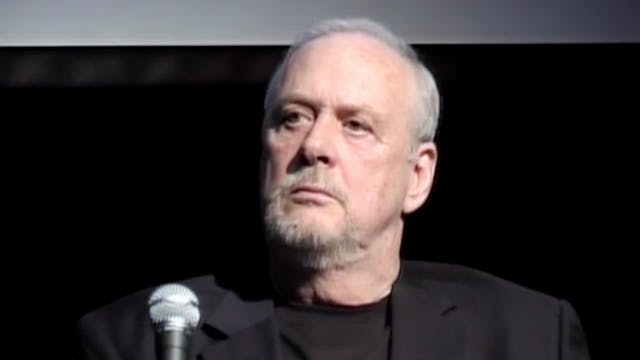The Jordanaires • Nashville Cats, 2008
Just Added
•
1h 32m
The Jordanaires’ Gordon Stoker and Ray Walker reminisce about the vocal group’s career highlights, sharing stories about recording with Patsy Cline, Elvis Presley, Tammy Wynette, and others.
During the October 25, 2008, program—part of the Country Music Hall of Fame and Museum’s Nashville Cats series—host Bill Lloyd notes that an estimated eight billion records featuring the voices of the Jordanaires, the most-recorded studio vocal group of all time, have been sold.
Stoker, who grew up in Gleason, Tennessee, talks about singing as a teenager with the John Daniel Quartet. After serving in the Air Force, Stoker attended college, then joined the Jordanaires in 1950. He assumed the lead tenor role in 1952. Ray Walker, who had been singing in quartets since he was in third grade, earned his spot in the Jordanaires in 1958. The two explain that the Jordanaires were more than willing to adapt their vocal approach to suit the song.
“We were always so fortunate to sing anything the producer wanted,” Stoker says. “You know, if you couldn’t sing it, they’d get somebody else.”
Walker explains the difference between gospel singing and spiritual singing, and he and Stoker mention their musical influences. They remember a time when they had a hit of their own, a cover of Marty Robbins’ “Sugaree,” and wanted to elevate their career even further. However, they took the advice of producer Ken Nelson and singer Eddy Arnold (a longtime supporter) to sustain their career by staying reliably in the background—a path that led to the group’s 2001 induction into the Country Music Hall of Fame.
Stoker and Walker share experiences of working with Elvis Presley in the studio and on the screen, acknowledging vocalist Millie Kirkham in the audience, and remembering a funny story about their collective session for Presley’s “Blue Christmas.” They also offer inside insight into how Patsy Cline felt “I Fall to Pieces” and “Crazy” should be recorded, and memories about the sessions for Ferlin Husky’s “Gone” and Jimmy Dean’s “Big Bad John.”
The longtime collaborators discuss how The Jordanaires’ Neal Matthews introduced the Nashville Number System, used by studio musicians, and note how Stoker originated a chapter of the American Federation of Television and Radio Artists (AFTRA) in Nashville, to the dismay of Chet Atkins and others.
The program winds down with tales of recording “Only Daddy That’ll Walk the Line” with Waylon Jennings and watching Jerry Reed interact with Elvis Presley (who was a huge fan of the guitarist), as well as the limitless vocal range of Tammy Wynette and the unassuming nature of country superstar Conway Twitty. Walker recounts a story of being the last person to talk to Patsy Cline at the Grand Ole Opry just before her 1963 death.
In the final moments in the program, Stoker speaks about his family members in attendance.
FOR MORE
Explore our public programming: https://countrymusichalloffame.org/plan-your-visit/exhibits-activities/public-programs/
FOLLOW THE MUSEUM
Instagram: https://www.instagram.com/OfficialCMHOF/
Facebook: https://www.facebook.com/countrymusichof/
Twitter: https://twitter.com/countrymusichof
Up Next in Just Added
-
Rodney Crowell • Songwriter Session, ...
Rodney Crowell opens a dialogue about songwriting and the creative process in this informative program, recorded September 21, 2013, at the Country Music Hall of Fame and Museum. He also performs a handful of songs including “It’s Hard to Kiss the Lips at Night,” “I Know Love Is All I Need,” and ...
-
David Briggs • Nashville Cats, 2011
David Briggs revisits his session work as a pianist in Muscle Shoals, Alabama, and in Nashville, during this interview illustrated with vintage photos, recordings, and film clips. He also recalls his recording sessions with Elvis Presley.
Recorded on March 26, 2011, the program is part of the Co...
-
Hank Williams Jr. • Interview and Per...
Hank Williams Jr. visits the Country Music Hall of Fame and Museum to perform and answer questions about his life and career, his father’s legacy, and his family’s ongoing dedication to creative endeavors.
Recorded on March 29, 2008, the live program was held to mark the opening of the Museum’s ...



